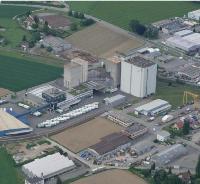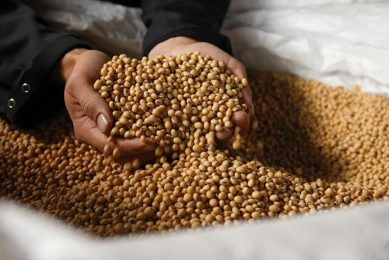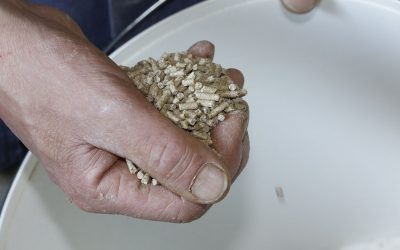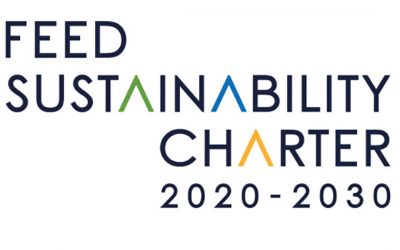EU feed production stable, but with interspecies shifts

Since the industrialisation and intensification of animal production started taking place in the late 1960s compound animal feed production increased with peaks and troughs. But now a saturation point has been reached with hardly any growth and only shifts in volumes between the main species can be observed.
Animal feeding stuffs, including feed materials and compound feeds, are the main input into livestock production. Within the EU-27, about 460 million tonnes (mt) of feeding stuffs are consumed by livestock each year. Out of this quantity, 228 mt are mostly roughages grown and used on the farm of origin. The balance, i.e. 232 mt of feed, includes cereals grown and used on the farm of origin (53 mt) and feed purchased by livestock producers to supplement their own feed resources (either feed materials or compound feed).
Due to a very good registration system in many European countries and the early establishment of the European feed compounders association (Fefac), data on compound feed production have been available since the 1960s. Compound feed production in what started as the EC-9 grew by over 7.5% per year during the 60s and early 70s. This reflected the development of the demand for animal products closely linked to the increasing purchasing power. In addition, particularly in the pig and poultry sectors, production was becoming more intensive requiring greater use of industrial compound feed to meet high performance and quality requirements.
For the remainder of the 70s, annual average growth in EC-9 compound feed production slowed down to a rate stabilising at only 4.4%. This lower rate partly reflected the effects of the 1973 “oil crisis” on consumers’ incomes. After a period of steady increase from the mid 80s on, consumption of all livestock products grew more slowly, because of the saturation of the EU-15 market and because of increasing consumer concern about health matters and animal welfare. From 1996 on, the compound feed production suffered from the impact of the BSE crisis which resulted in a 9% reduction in cattle feed in 1998 compared to 1995. This decrease was offset by a parallel growth of consumers’ demand for white meat. As a result, compound feed production in the EU has remained almost stable since 1996. The 2004 and 2007 enlargements added some 20 mt of compound feed to the EU production.According to statistical data provided by Fefac members (Table 1), compound feed production in the EU-27 in 2010 reached a level of 149.9 mt, i.e. 1.4% above the figure for 2009 (147.8 mt). This positive result is exclusively due to an increased demand for poultry feed (+3%), whereas pig feed production remained stable and cattle feed production increased by 1%. For the first time ever, poultry feed overtook pig feed to become the leading segment of compound feed in the EU. Despite the fall in pig feed use, pig production in the EU increased by 3%. This indicates that farmers searched for and used cheaper feedstuffs for their animals than compound feed.
Global, but local
Two major EU countries have experienced opposing trends over the past two decades. The Dutch feed industry lost almost 4 mt between 1993 and 2003 but has resumed a positive trend since 2006. This was mainly due to diminishing (‘restructuring’) of the pig herd as a result of swine flu outbreaks in early 2000s.
On the other hand, Spain, after a substantial expansion in the last few years with a peak in 2007, seems to have entered into a more uncertain period due to price constraints. All in all Germany is the leading cattle feed producer, Spain is the leader for pig feed and France clearly breaks away from the other countries for poultry feed production. The compound feed production in the EU is on a similar level as the production in the USA and represents 20% of the global production that is estimated at around 770 mt.
The very fast development of feed production in China and Brazil (almost 10%/yr for Brazil and 5% for China) was hardly affected by the financial crisis and has largely offset the setback in the EU and USA.
For this year Fefac expects a decrease of 1.5% back to the level of 2009. Poultry feed will continue to rise, whereas pig feed production is to drop and cattle feed production is expected to remain the same as 2010.Today, about 3,800 feed mills manufacture more than 80% of the world’s industrial feed. The world’s 10 largest feed manufacturers produce less than 65 mt per year – less than 11% of global feed output. So, the global feed industry still remains broadly based with many local and regional commercial feed companies as well as specialised firms.
Raw materials
Compound feeds are manufactured from a mixture of raw materials designed to achieve pre-determined performance objectives among animals. These raw materials are obtained from a wide variety of sources. Hence, the industry provides a major market for EU cereals, oilseeds and pulses. Some raw materials are obtained from the co-products of the food industry. Other important ingredients which cannot be grown in sufficient quantity in the EU are imported from third countries. These diverse sources of raw material supplies are an important factor in the industry’s ability to manufacture feeds of both high quality and at competitive prices for livestock farmers.
Despite the huge variations in feed material prices over the last years, the proportion of feed materials per categories remained relatively stable (47% for cereals, 27% for oilseed meals). However, this does not reflect significant changes for some feed materials such as for corn gluten feed imported from the USA which has almost disappeared since 2007 due to the zero-tolerance policy for risk-assessed but not yet EU approved GMOs.
Lately there is more discussion on the question if MBM or Processed Animal Protein (PAP) should be allowed in animal feed again. Due to the mad cow disease crisis this valuable protein material was banned from all animal feeds.
There is now an EU-proposal that still prohibits feeding animal proteins to ruminants and also prohibits chicken protein to chicken or pigs to pigs, the so-called intra-species recycling. This rule was mainly instigated as a result of public concern on cannibalism. The two measures are important safeguards, as is the supply chain channelling required by the new legislation. By channelling the supply chain the Commission can prevent any potential cross-contamination, ensuring that ruminant diets, for example, remain free of any processed animal protein.
It is still questionable if companies will really use it, which depends on the facilities that they have. Also not every country is enthusiastic about the proposal. In the UK rumours are that Muslim organisations might withstand the fact that pig protein is fed to chicken and thus might refuse to eat chicken if these are fed as such.
GM-traces issue
Another issue, importation of raw materials with traces of GM crops, has been solved for the short term with the so-called ‘technical solution” allowing for minute traces of GMOs not yet authorised in the EU. This ‘technical solution’ will help reducing the likelihood of a disruption in feed supplies by boosting legal certainty for animal feed imports into Europe. It allows up to 0.1% of not yet authorised GM material in the EU, for which a dossier is pending with EFSA. This more pragmatic approach takes account of the dynamics of international trade and allows European farmers continued access to vital protein feed imports.
Feed industry organisations, however, call for additional actions towards more comprehensive solutions in order to prevent imminent feed and food supply and trade problems. Key exporting countries are no longer prepared to await full EU approval of GM crops before authorising their cultivation on their territory. This will increase the likelihood of new trade blockages at EU level in the new crop season 2011/2012.
The number of GM events commercially cultivated worldwide is predicted to increase from about 30 today to over 130 by 2014, according to the European Commissions’ Research Joint Research Centre. Many of these products could find their way into the European food and feed supply chain, and it is therefore important that a practical threshold level for GM products not yet authorised in the EU is set. Many EU Member States have also indicated support for the inclusion of food in the scope of the technical solution.The majority of delays in the EU system are caused by political hold-ups in the EU decision-making process. It is crucial for the food and feed chain to improve the timeliness and efficiency of the EU authorisation system, which is feasible without detracting from the integrity of the risk assessment process.











